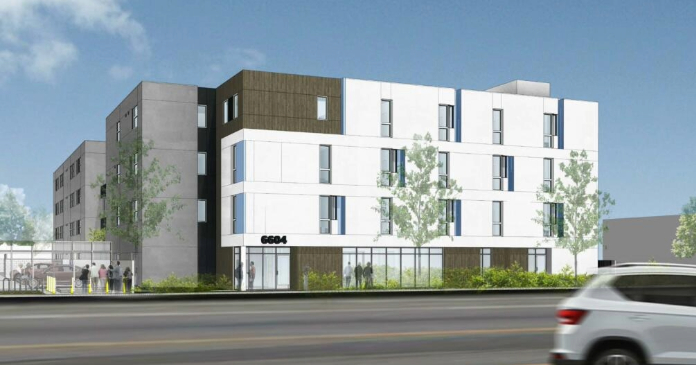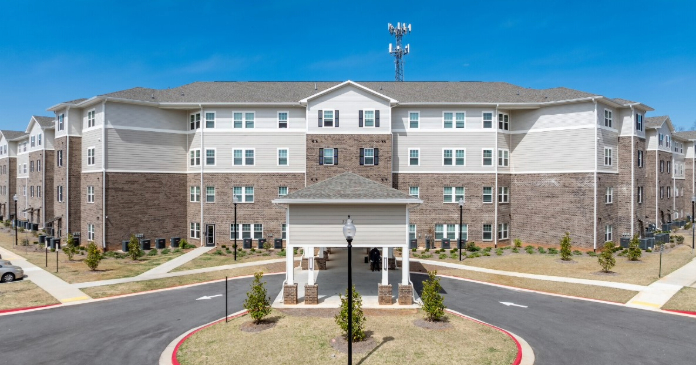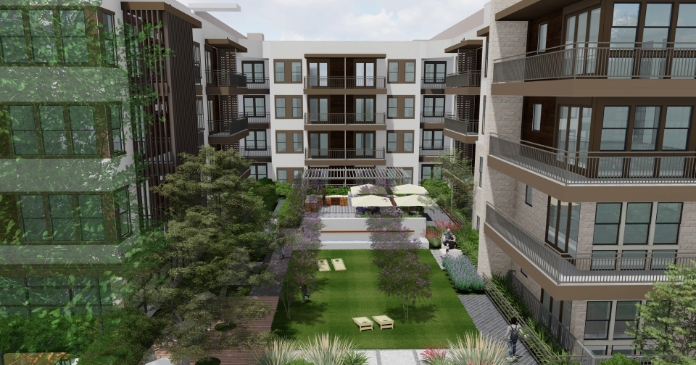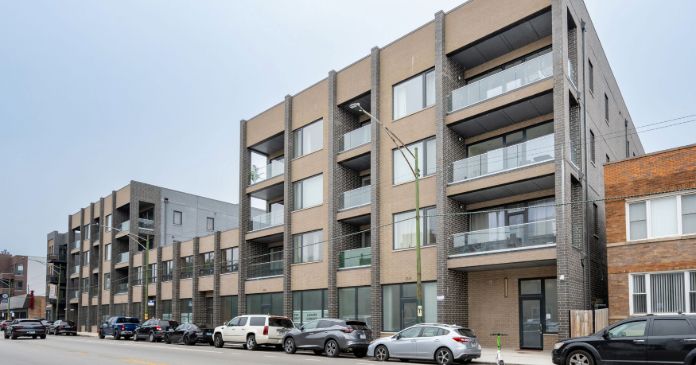The Census Bureau’s new residential construction report for February reported that the number of multifamily permits, starts and completions were all up significantly for the month. Once again, there were more starts than completions so that the number of multifamily units under construction rose to another new high.
The report on single-family housing construction was also positive. On a seasonally adjusted basis, single family permits rose 8 percent, and starts and completions both rose 1 percent. The number of single-family units under construction fell 13,000 to 734,000 units.
Number of multifamily housing permits leaps higher
The number of multifamily permits issued for buildings with 5 or more units in February was reported to be 700,000 units on a seasonally adjusted, annualized basis. This was up 24 percent (37,000 units) from January’s figure. February permits were up 17 percent from the level recorded in February 2022 and were up 14 percent from the trailing 12-month average.
In addition, 47,000 permits were issued in February for units in buildings with 2 to 4 units. This was down 7,000 units from the level for January. February permits for units in buildings with 2 to 4 units were down 13 percent from the year-ago level and were down 9 percent from the trailing 12-month average.
Regional data for multifamily housing is only reported for structures with two or more units. “Structures with 5 or more units” is not broken out as a separate category. Since the regional data is highly volatile and is frequently revised, it is examined here based on three-month moving averages. This averaging will tend to smooth out the month-to-month variations in the data.
Nationally, the three-month weighted moving average for multifamily housing permits issued in February was up 12 percent from the level in January and was up 1 percent from the level of February 2022. The three-month weighted moving average for permits came it at 680,000 units.
On a month-over-month basis, the three-month weighted moving average for multifamily permit issuance was up 26 percent in the West, 11 percent in the South and 3 percent in the Midwest. Permit issuance fell 3 percent in the Northeast.
When compared to year-earlier levels, the three-month weighted moving average of multifamily permits issued was up 29 percent in the South and 4 percent in the West. Permit issuance fell 17 percent in the Midwest and 51 percent in the Northeast.
The following chart shows the three-month weighted moving averages of permits by region for the last 25 months.
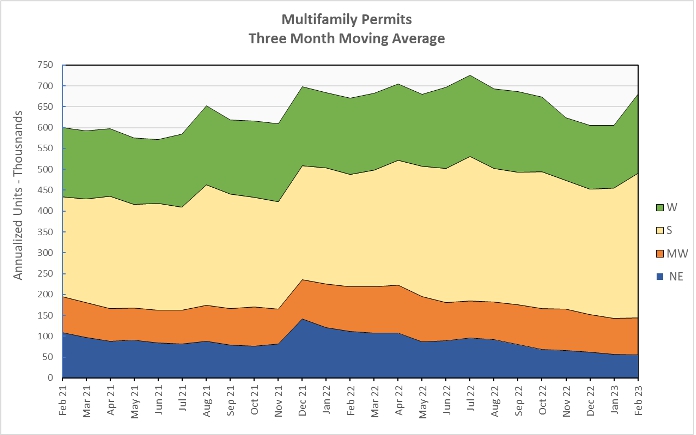
Multifamily housing construction starts surge
The preliminary February figure for multifamily housing starts in buildings with 5 or more units was 608,000 units on a seasonally adjusted, annualized basis. This was reported to be up 24 percent (118,000 units) from the revised figure (+33,000 units) for January.
Compared to the level of February 2022, multifamily housing starts in buildings with 5 or more units were up 14 percent. The reported starts figure was 15 percent higher than the trailing 12-month average and was 56 percent higher than the monthly average from 2019.
Multifamily housing construction starts (two or more units per building) in February were up 9 percent from their January level for the country as-a-whole, based on three-month weighted moving averages. Starts were up 51 percent in the Midwest, 9 percent in the South and 6 percent in the West from the levels of the prior month. Starts fell 11 percent in the Northeast.
The three-month weighted moving average of starts was up 2 percent for the country-as-a-whole on a year-over-year basis. Compared to February 2022, starts were up 39 percent in the West. However, starts fell 8 percent in both the Northeast and the South, and starts fell 13 percent in the Midwest.
The following chart shows the three-month weighted moving average of starts by region for the last 25 months.
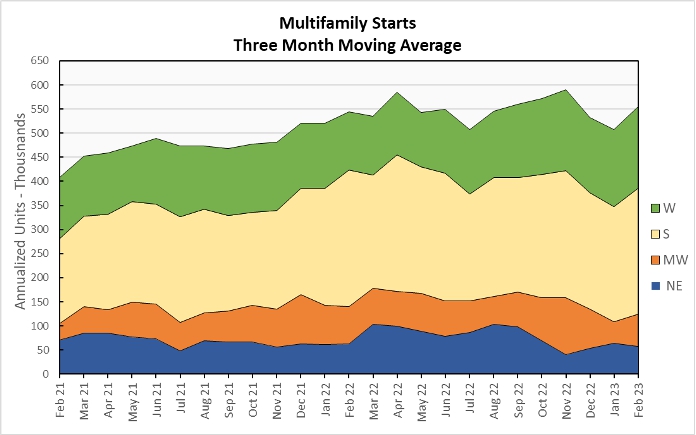
Multifamily housing completions jump
The preliminary February multifamily housing unit completions figure in buildings with 5 or more units per building was 509,000 units on a seasonally adjusted, annualized basis. This was reported to be up 45 percent (157,000 units) from January’s revised (+3,000 units) figure.
Compared to February 2022, multifamily housing completions in buildings with 5 or more units per building were up 72 percent. Compared to the trailing 12-month average, completions were up 42 percent and compared to the monthly average for 2019, completions were up 47 percent.
For the country as-a-whole, multifamily housing construction completions (two or more units per building) were up 16 percent month-over-month, comparing three-month weighted moving averages. The three-month weighted moving averages of completions were up 33 percent in the West, 32 percent in the South and 9 percent in the Midwest. However, completions were down 41 percent in the Northeast.
On a year-over-year basis, the three-month weighted moving average of completions in buildings with 2 or more units per building was up 44 percent nationally. Completions were up 70 percent in the West, 46 percent in the South and 39 percent in the Midwest. Completions fell 8 percent in the Northeast.
The three-month weighted moving average of completions by region for the past 25 months are shown in the chart below.
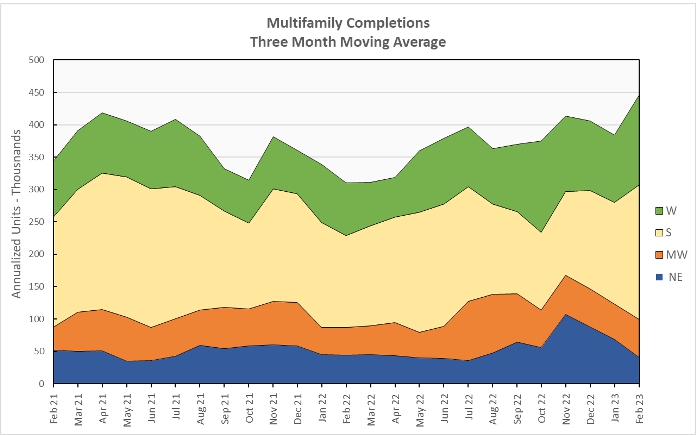
The number of multifamily units under construction was up again in February. The number of units under construction has been flat or higher every month since February 2020. Census reported that there were 941,000 units under construction in buildings with 5 or more units per building on a seasonally adjusted annualized basis. This is up by 9,000 units from the level of the month before. It is 22 percent, or 172,000 units, higher than the number of units under construction one year earlier.
The high for multifamily units under construction reached during the boom of the 1970’s was 901,000 units in 1973.
All data quoted are based on seasonally adjusted results and are subject to revision.




